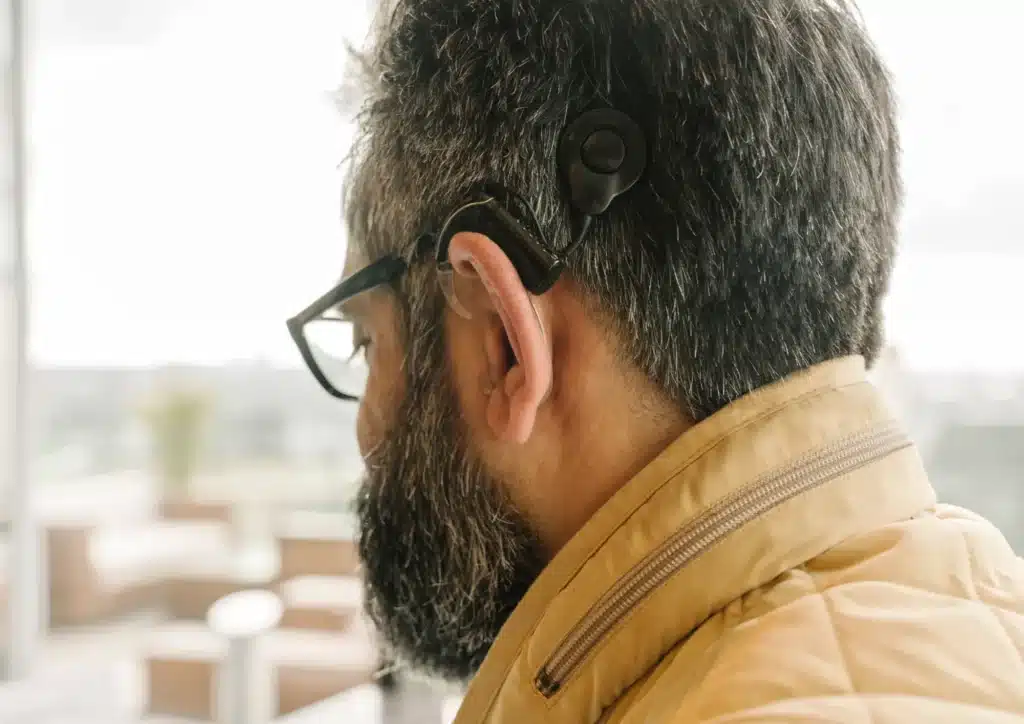Understanding Cochlear Implants

In the realm of hearing solutions, cochlear implants have long stood out as transformative devices that have positively impacted the lives of hundreds of thousands of people with severe to profound hearing losses. Understanding the cochlear implant journey can feel overwhelming, which is why we’ve crafted this guide to provide a comprehensive overview. Shedding light on their functionality, candidacy criteria and the significant life-changing benefits they offer to those seeking a path to improved hearing.
What is a cochlear implant?
Cochlear implants are designed for people with severe to profound sensorineural hearing loss, which is hearing loss which originates in the inner ear. With this type of hearing loss, hair cells in the part of the inner ear known as the cochlea are damaged or missing. As a result, someone with damaged or missing hair cells can’t detect sounds properly. This is because functioning hair cells are required to transform sound vibrations into electrical signals that can travel via the auditory nerve to your brain. When the hair cells are damaged, sound vibrations cannot be converted into electrical signals.
Cochlear implants are sophisticated electronic devices designed to send electrical signals to the brain where they can still be interpreted as sounds, despite the damaged or missing hair cells. This is done by bypassing the cochlea and directly stimulating the auditory nerve. Unlike traditional hearing aids, that amplify sounds and send the signals through the cochlea, cochlear implants convert the sounds into electrical signals that the brain can interpret. This makes it a viable option for individuals with severe to profound hearing losses.
How does a cochlear implant work?
A cochlear implant consists of two main parts:
- Internal component: This internal part is implanted behind the ear. A cochlear implant consists of a receiver, magnet, housing, and an electrode array. An electrode array is the part of technology that sends the electrical signals from the implant housing to stimulate the cochlea. This is surgically placed inside the cochlea.
- External component: The audio processor, which is external, is either worn off the ear (and on the side of the head) or on (and behind) the ear. The audio processor is held in place with magnets.
A cochlear implant works by replicating the sense of hearing following these steps:
- First, sound waves travel to your ear and the external audio processor.
- Second, the external audio processor detects the sounds and transmits them through the skin to the internal implant as coded electrical signals.
- Third, the internal implant then converts this information into electrical pulses, that are sent to the cochlea via the electrode array. The electrode array stimulates specific locations of the cochlea responsible for specific frequencies (or pitches).
- Lastly, in the entire cochlea, these electrical pulses bypass the non-functioning hair cells by directly stimulating the nerve fibres that send the signals to the brain. These are then perceived as meaningful sounds.
Who can a cochlear implant help?
Cochlear implants are a remarkable, groundbreaking solution; however, they are not suitable for everyone. It depends on the type and degree of hearing loss. It is typically for individuals with a severe to profound sensorineural hearing loss. Sensorineural hearing loss can be caused as a result of genetics, head trauma, exposure to loud noise or other causes. Sensorineural hearing loss is not only the most common type of hearing loss, but also a very common part of the ageing process. In fact, according to the World Health Organization (WHO), approximately, one-third of people over the age of 65 are affected by disabling hearing loss worldwide.
Candidates should have limited benefits with their traditional hearing aids and have no medical contraindications to the cochlear implant surgery. Successful cochlear implantation requires active participation in rehabilitation and auditory training. So, commitment and motivation to rehabilitation is of utmost importance.
The ideal candidate will undergo a journey from evaluation to activation and beyond.
Life changing benefits with a cochlear implant
- Improved Speech Perception: Cochlear implants significantly enhance speech perception, allowing users to understand and communicate more effectively.
- Enhanced Quality of Life: Many recipients report a substantial improvement in their overall quality of life, from participating in conversations to enjoying a sense of independence.
- Educational and Occupational Advancements: Cochlear implants contribute to improved educational outcomes for children and broaden possibilities in the workplace for adults.
- Social Connectivity: The ability to engage in conversations and connect with others fosters social relationships and inclusiveness whilst reducing feelings of isolation and loneliness.
Challenges and considerations
While cochlear implants offer life-changing benefits, it’s essential to acknowledge potential challenges:
- Surgery Risks: As with any surgical procedure, there are inherent risks that should be discussed with the medical team.
- Auditory Rehabilitation Commitment: Success with cochlear implants requires dedication to rehabilitation and auditory training.
Cochlear implants have emerged as a revolutionary solution for individuals with severe to profound hearing loss, offering a pathway to a world of sound that was once inaccessible. Proceeding with a cochlear implant is a big decision. With this comprehensive overview, our aim was to demystify the cochlear implant process, from understanding the components to exploring candidacy criteria and highlighting the transformative benefits. As technology continues to advance, cochlear implants remain at the forefront of hearing solutions, empowering the suitable individuals to embrace a life filled with the richness of sound and the joy of enhanced communication.
